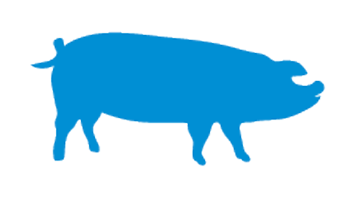|
|
| (2 intermediate revisions by the same user not shown) |
| Line 1: |
Line 1: |
| − | Under the intensive '''indoor''' husbandry systems practiced in the UK, worms affect the health and productivity of growing pigs to a considerably lesser extent than is the case with ruminants or horses. Even so, if there are any in adequacies in buildings, nutrition or management that cause stres or enable eggs and larvae to accumulate, worm infections can increase the food conversion ratio and/or days to slaughter.
| + | {{frontpage |
| | + | |pagetitle =Nematodes of Pigs |
| | + | |pagebody = <div style="text-align: left; direction: ltr; margin-left: 1em;"> |
| | + | </div> |
| | + | |contenttitle =Content |
| | + | |contentbody =<big><b> |
| | + | <br> |
| | + | <categorytree mode=pages>Pig Nematodes</categorytree> |
| | | | |
| | + | </b></big> |
| | + | |logo =pig-logo.png |
| | + | }} |
| | | | |
| − | '''Free-range''' pigs are exposed to a wider range of potentially harmful nematodes, as eggs and larvae can accumulate in soil, and there is greater access to intermediate hosts (such as earthworms and pig lungworms.
| + | [[Category:Pig Parasites]] |
| − | | |
| − | | |
| − | There are only four gastro-intestinal nematodes of consequence in the UK:
| |
| − | *''Hyostrongylus rubidis''
| |
| − | *''Oesophagostomum'' species
| |
| − | *''Ascaris suum''
| |
| − | *''Trichuris suis''
| |
| − | | |
| − | and one lungworm genus (in outdoor pigs):
| |
| − | *''Metastrongylus'' species
| |
| − | | |
| − | == Gastro-Intestinal Nematodes ==
| |
| − | ''H. rubidis'' and ''Oesophagostomum'' species are '''strongyle''' nematodes. They do not invoke a strongly protective immune response. Pigs therefore remain susceptible throughout their lives. Heavy infections may occur in sows at pasture or in straw yards.
| |
| − | | |
| − | === Control of Gastrointestinal Nematodes in Pigs ===
| |
| − | Two approaches are used in intensive units: routine and strategic:
| |
| − | | |
| − | | |
| − | 1) '''ROUTINE dosing''':
| |
| − | *the most common approach
| |
| − | *all stock on the farm are given medicated feed simultaneously
| |
| − | *initially at three-monthly intervals
| |
| − | *faecal egg-counts are monitored routinely
| |
| − | *the treatment interval is increased as the prevalence/intensity of infection declines (decision dependent on egg-counts)
| |
| − | *this may accelerate the onset of anthelmintic resistance in ''Oesophagostomum'' if the herd is dosed too frequently.
| |
| − | | |
| − | | |
| − | 2) '''STRATEGIC dosing''':
| |
| − | *sows are treated before entering the farrowing house:
| |
| − | **this eliminates shedding of ''Ascaris'' eggs by carrier sows
| |
| − | **eliminates periparturient egg-rise (strongyle eggs)
| |
| − | **ensures that milk production is not adversely affected
| |
| − | *weaners treated before entry to the fattening house
| |
| − | *other age groups treated when moved on to new pens.
| |
| − | | |
| − | | |
| − | [[Category:Pig]][[Category:To_Do_-_Parasites]] | |
